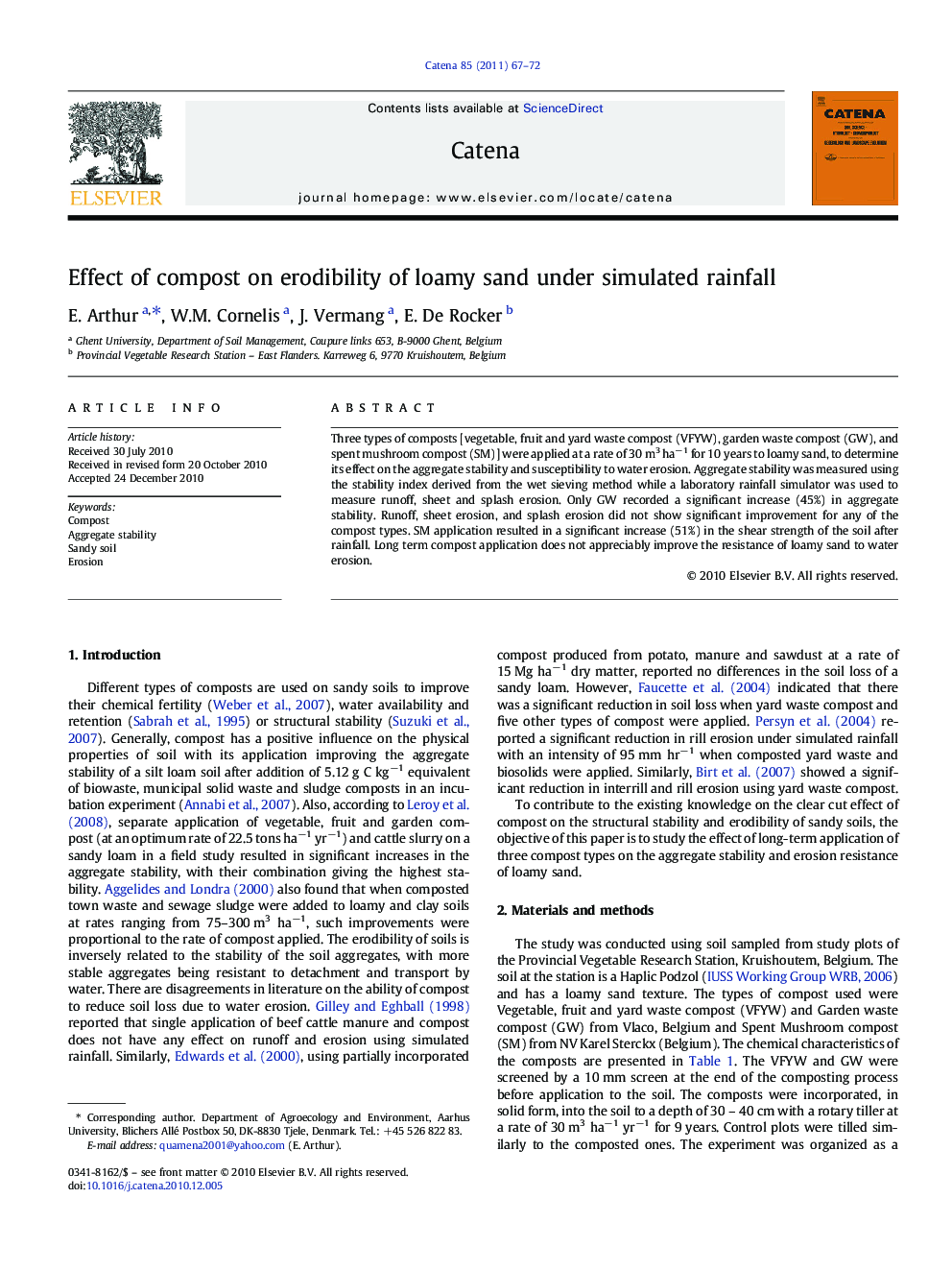| کد مقاله | کد نشریه | سال انتشار | مقاله انگلیسی | نسخه تمام متن |
|---|---|---|---|---|
| 4572110 | 1332151 | 2011 | 6 صفحه PDF | دانلود رایگان |

Three types of composts [vegetable, fruit and yard waste compost (VFYW), garden waste compost (GW), and spent mushroom compost (SM)] were applied at a rate of 30 m3 ha−1 for 10 years to loamy sand, to determine its effect on the aggregate stability and susceptibility to water erosion. Aggregate stability was measured using the stability index derived from the wet sieving method while a laboratory rainfall simulator was used to measure runoff, sheet and splash erosion. Only GW recorded a significant increase (45%) in aggregate stability. Runoff, sheet erosion, and splash erosion did not show significant improvement for any of the compost types. SM application resulted in a significant increase (51%) in the shear strength of the soil after rainfall. Long term compost application does not appreciably improve the resistance of loamy sand to water erosion.
Research Highlights
► Garden waste compost significantly improves aggregate stability of loamy sand.
► Long term compost application does not significantly reduce soil erodibility.
► Spent mushroom compost increases resistance to soil physical deformation.
Journal: CATENA - Volume 85, Issue 1, April 2011, Pages 67–72